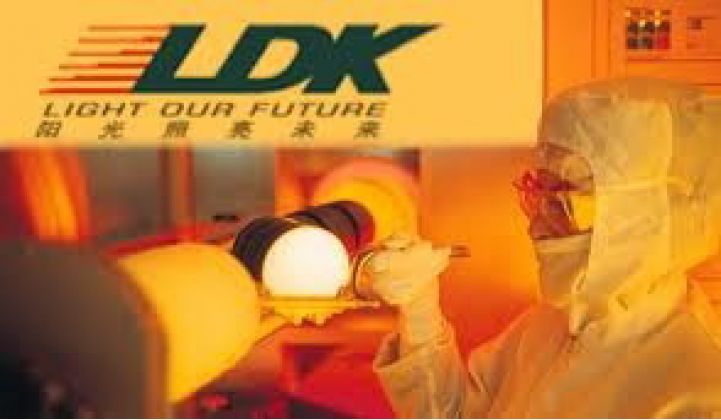China’s LDK Solar, struggling with four straight quarters of losses, has gotten its home city of Xinyu to pay off about $80 million in debt. Looks like the Chinese model of solar capitalism has entered a new and, at least for its global competitors, a more troubling phase.
According to an official website, Xinyu authorities are repaying LDK’s loans from Huarong International Trust Co. While the city hasn’t specified how much it’s paying, LDK’s debt to Huarong stood at $79.4 million at the end of 2011, LDK said in May.
It’s the first time a Chinese local government has actively paid off debt for a non-state solar company, according to reports. For the rest of the industry, it’s a grim indication that China’s solar industry may start tapping another source of government support to keep its market-flooding strategy going. That's bad news, because the solar industry needs oversupply to be taken offline to balance out the market.
“Based on the recent meetings at Intersolar, several investors were expecting companies with high levels of debt to go out of business,” is how a Tuesday Deutsche Bank analyst note on the LDK bailout put it. “Today’s announcement clearly decreases this probability.” That means less prospect of relief from a Chinese-led price war that’s seen PV panels drop 75 percent in price over the past two years, resulting in multiple bankruptcies in the U.S. and Europe, Solyndra’s only being the best-known example.
The news also comes amidst a full-blown solar trade war with the United States, which has put tariffs on Chinese imports that are driving some promising companies out of business. China is threatening retaliation. Meanwhile, it’s not clear that U.S. tariffs will have the intended effect. GTM Research has reported that Chinese module suppliers can avoid it by sourcing cells from Taiwan at an estimated additional cost of only 6 cents to 8 cents per watt, and sources have confirmed that Chinese module prices in the U.S. have continued to trend downward even after the tariff ruling.
LDK is not the strongest of Chinese solar players. It saw its market value decline 35 percent between the launch of U.S. tariffs and the end of May, and has reported four straight quarters of losses, most recently in June with a first-quarter net loss of $185.2 million. In May it reported that it may not remain a "going concern" if it can't access funds.
LDK shares were trading at $1.80 on Tuesday afternoon, down 2 cents or 1.1 percent for the day. Deutsche Bank said LDK’s deal with Xinyu threatens an increased risk of “significant dilution for equity holders of other similarly heavily leveraged names,” such as Suntech and Yingli.



